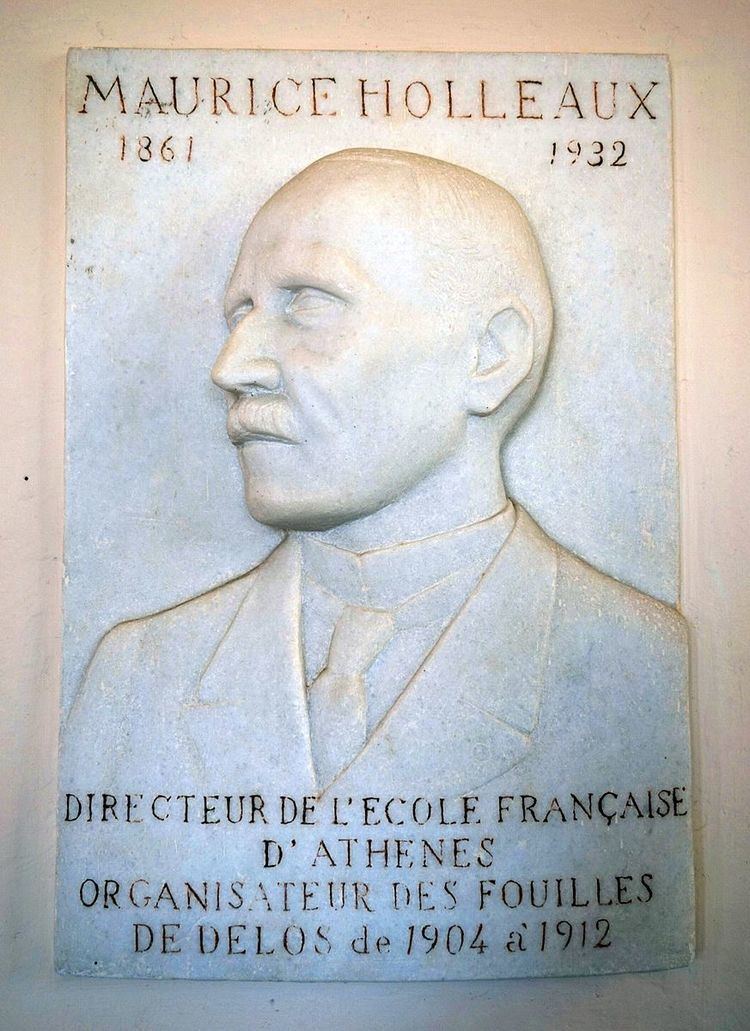 | ||
Occupation HistorianArchaeologistEpigrapher Died 21 September 1932, La Ferté-sous-Jouarre, France | ||
Maurice Holleaux (15 April 1861 – 21 September 1932) was a 19th–20th-century French historian, archaeologist and epigrapher, a specialist of Ancient Greece.
Contents
Années de formation
Admitted in the École normale supérieure in 1879, Holleaux was agrégé of history in 1881 and became a member of the French School at Athens in 1882. He then conducted epigraphic explorations in Samos and Rhodes. He devoted thereafter an important scientific activity in the latter city. In 1884 he undertook missions in Asia Minor during which he discovered with Pierre Paris the inscription of Diogenes of Oenoanda. Back in Greece, he discovered in Beotia the Ptoion sanctuary. Between 1884 and 1891 he directed the excavation of this shrine to Apollo Ptoios in Boeotia. In 1888 he discovered an inscription bearing the text of the speech Nero spoke in Corinth in 67 to restitute their freedom to the Greeks.
Career
He was appointed in the University of Lyon in 1888. He then became a friend of Philippe Fabia. His research abandoned the archaeological area to focus more exclusively on epigraphy.
Leaving Lyon after sixteen years of teaching, he directed the French School at Athens from 1904 to 1912. Succeeding Théophile Homolle, he led archaeological activities of the school and then oversaw the archaeological exploration of Delos.
On his return to France, he was a lecturer at the Faculty of Paris. In 1918 he published a memoir which then became his complementary thesis:Étude sur la traduction en grec du titre consulaire. In 1923, he defended his main thesis, completed at the end of 1920: Rome, la Grèce et les monarchies hellénistiques au IIIe s. BC, 273-205 during a session remained memorable where he himself was critical of his own work. The work yet deeply renewed the perspective on the attitude of Rome to the Greeks. Holleaux was then appointed professor of Hellenistic antiquity to a Chair at the Sorbonne.
In 1928 he became a member of the Académie des inscriptions et belles-lettres. In 1927, he succeeded Paul Foucart to the chair of Greek epigraphy of the College de France.
Maurice Holleaux was the master of historian Louis Robert who gathered and published posthumously his articles. One of his son was the magistrate and lawyer Georges Holleaux (1893-1973).
